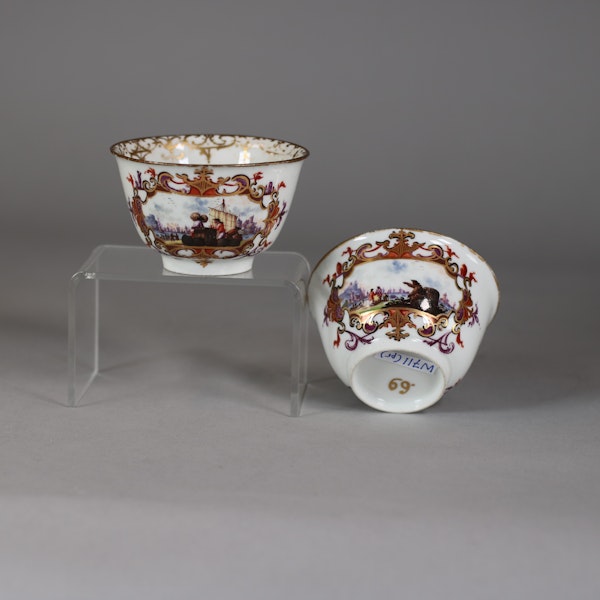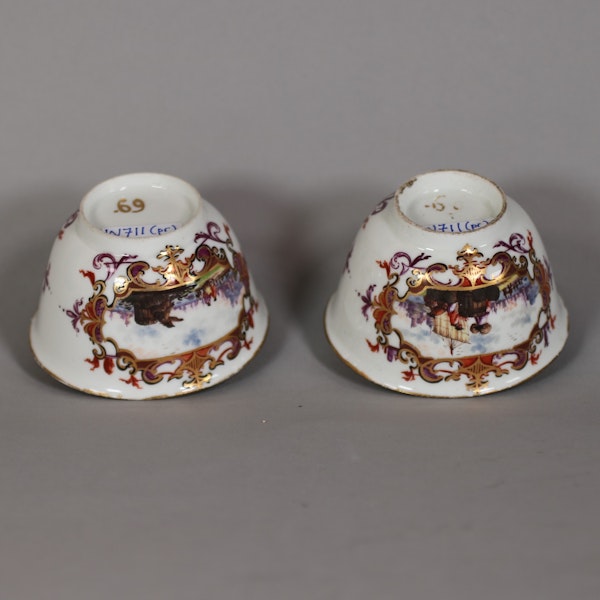Pair of Meissen teabowls, c.1722
Pair of Meissen teabowls, c.1722
POA
Description
Pair of Meissen teabowls, c.1722, decorated to either side in polychrome enamels with quayside scenes containing figures with sacks and barrels by the water’s edge, ships and a distant town visible beyond; set within ornate Böttger lustre borders with scrollwork and plumes in iron-red and puce; the interiors with bands of gilt laub-und-bandelwerk to the rims and a bouquet of ‘Indianische blumen’ tied with a ribbon within double red circle to the central well, the bases with gilder's mark 69 in gilt.
Dimensions:
Diameter: 7.5cm. (2 15/16in.)
Condition:
Minute chip to rim of one teabowl, the other teabowl with rubbing to gilding on inside of bowl
Notes:
‘Indianisch blumen’ bear no strong resemblance to any known species of flower. The motif was instead developed at Meissen during the period in which Johann Gregorius Höroldt (1696-1775) was a key figure at the manufactory. He was inspired by Japanese ceramic design and Indian textiles, which played an important role in global trade of the seventeenth and eighteenth centuries. Floral designs were a favourite theme of the Mughal emperors who ruled the Indian subcontinent at the time. At first, Mughal court painting depicted floral motifs naturalistically, but under the rule of Shah Jahan (1628-1658), more stylised depictions were favoured and came to dominate Mughal cottons and, consequently, European ceramic design. Designs incorporating merchant trading scenes were also popular at Meissen, and attest to the continued cultural and economic role played by the trade of luxury items, including the Asian porcelain wares which Meissen had initially been set up to imitate.
| item details | |
|---|---|
| Material and Technique | Porcelain with overglaze enamel and gilt decoration |
| Origin | German |
| Period | 18th Century |
| Condition | Very good |
| Diameter | 7.5cm. (2 15/16in.) |
Product REF: W711












